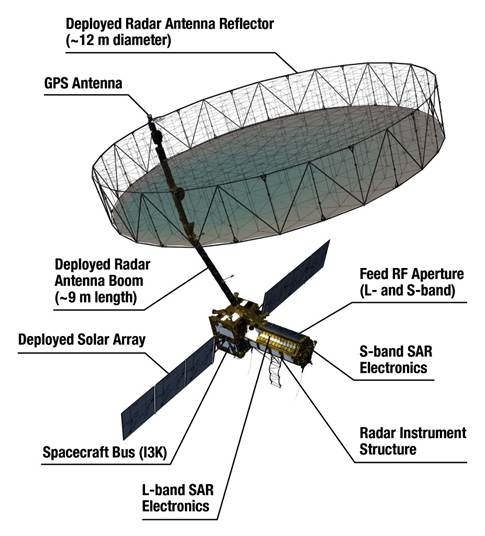Launch Details:
- Satellite: NASA-ISRO Synthetic Aperture Radar (NISAR)
- Weight: 2,392 kg
- Launch Vehicle: GSLV-F16 (Geosynchronous Satellite Launch Vehicle)
- Launch Site: Second Launch Pad, Satish Dhawan Space Centre, Sriharikota
- Orbit: 743-km Sun-Synchronous Orbit
- Launch Time: Scheduled for 5:40 p.m., Wednesday (July 30, 2025)
- Countdown: Began at 2:10 p.m., Tuesday (27.5-hour duration)
Relevance : GS 3(Science and Technology, Space)

Key Features of NISAR:
- Joint Mission: First collaborative satellite mission between NASA and ISRO.
- Synthetic Aperture Radar: Carries both L-band (by NASA) and S-band (by ISRO) radar systems for dual-frequency earth observation.
- Observation Capacity:
- Global coverage every 12 days
- All-weather, day-night imaging
- High-resolution data for long-term global change monitoring.
Applications:
- Disaster Management: Earthquakes, landslides, floods, and cyclones
- Agriculture & Forestry: Crop monitoring, forest biomass, and land use changes
- Climate Science: Glacier dynamics, sea-level rise, soil moisture
- Urban Planning & Infrastructure Monitoring
Collaborative Dimensions:
- India’s Contribution:
- Spacecraft bus
- S-band radar
- Launch vehicle and mission operations
- NASA’s Contribution:
- L-band radar
- Radar reflector boom
- Communication subsystems, GPS, and data handling systems
Institutional Collaboration:
- Duration: Over a decade of joint development
- COVID-19 Challenge: Despite the pandemic, engineers from both countries ensured continued integration and testing:
- ~65 ISRO engineers visited NASA’s Jet Propulsion Laboratory (JPL)
- ~175 NASA engineers visited ISRO facilities
- Strategic Significance: A model for future international collaborations in space and earth science.
Broader Implications:
- Space Diplomacy: Enhances strategic cooperation in civilian space technology
- Capacity Building: Mutual learning and technology transfer
- Earth Science Leadership: Positions both agencies at the forefront of next-gen environmental monitoring



